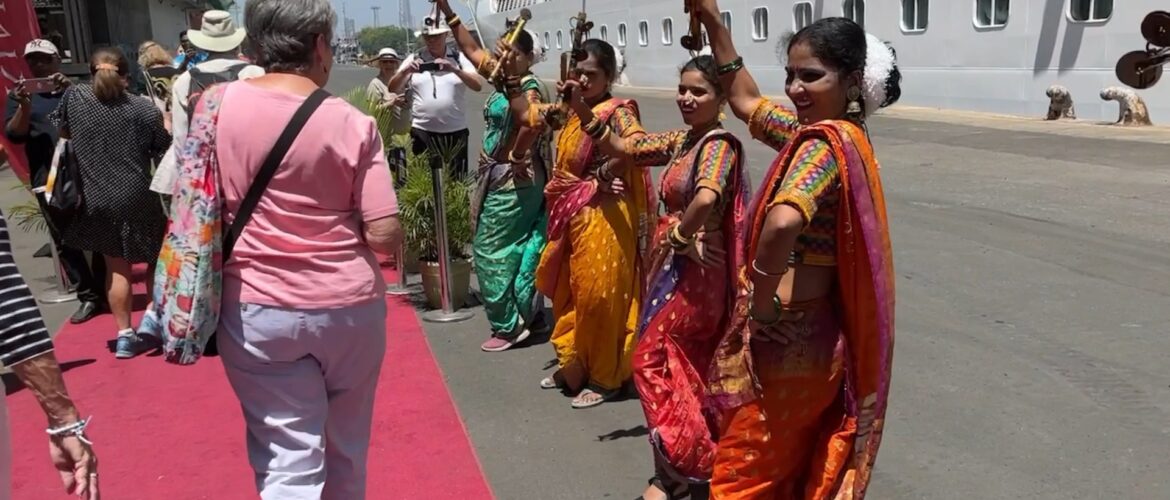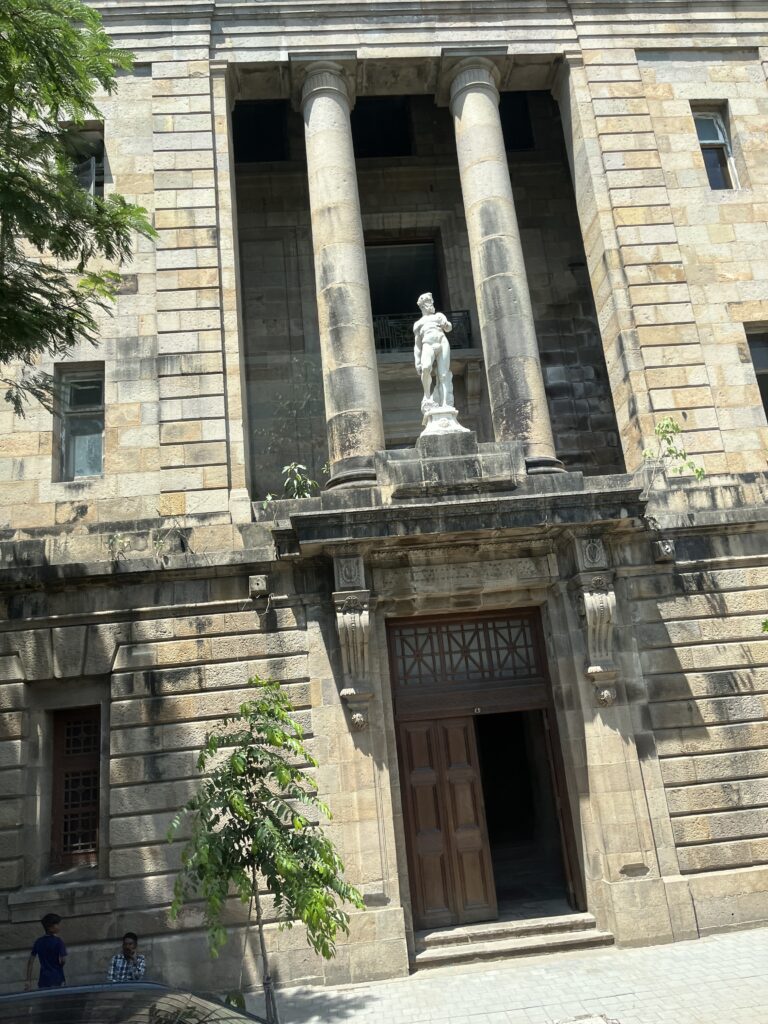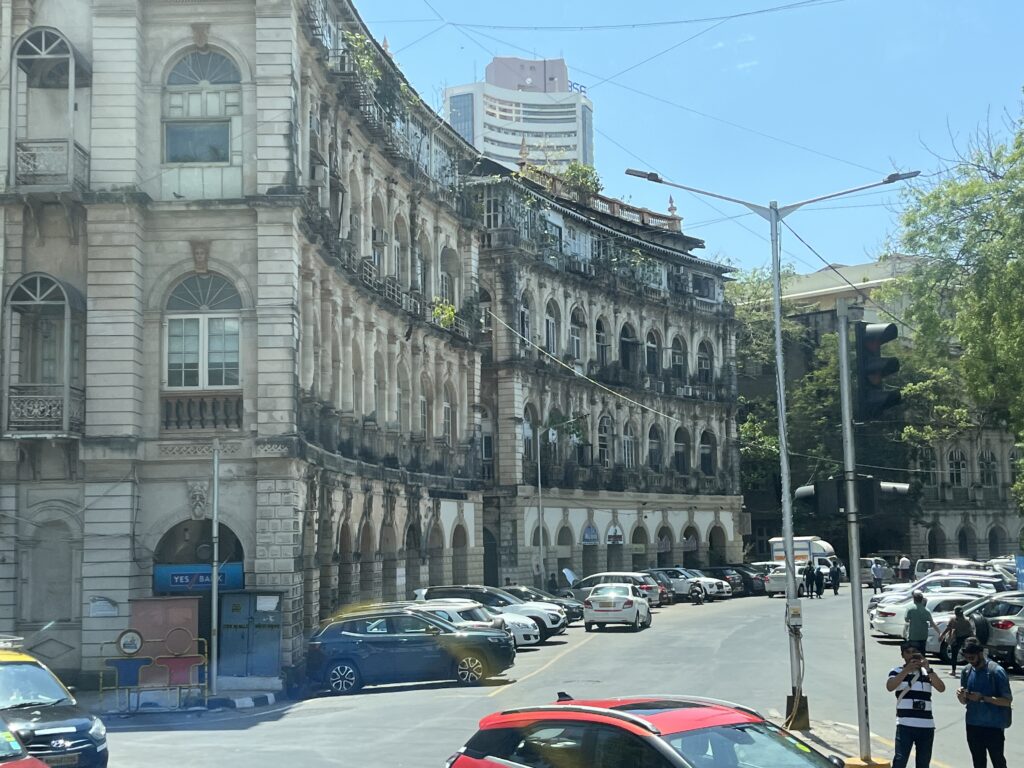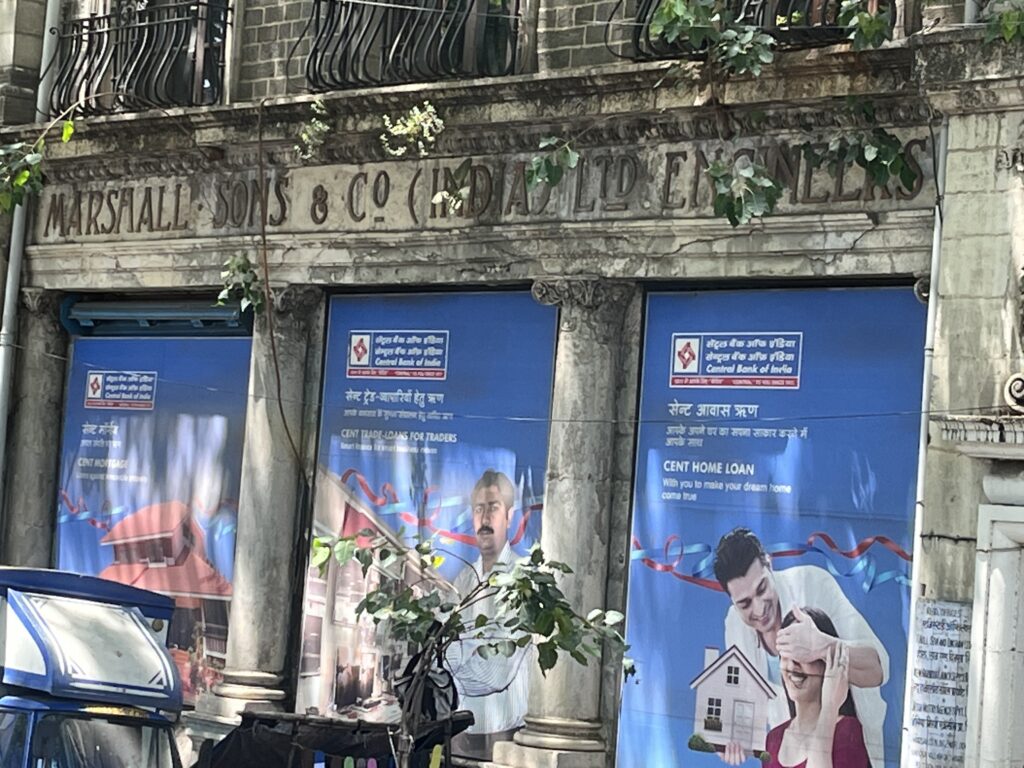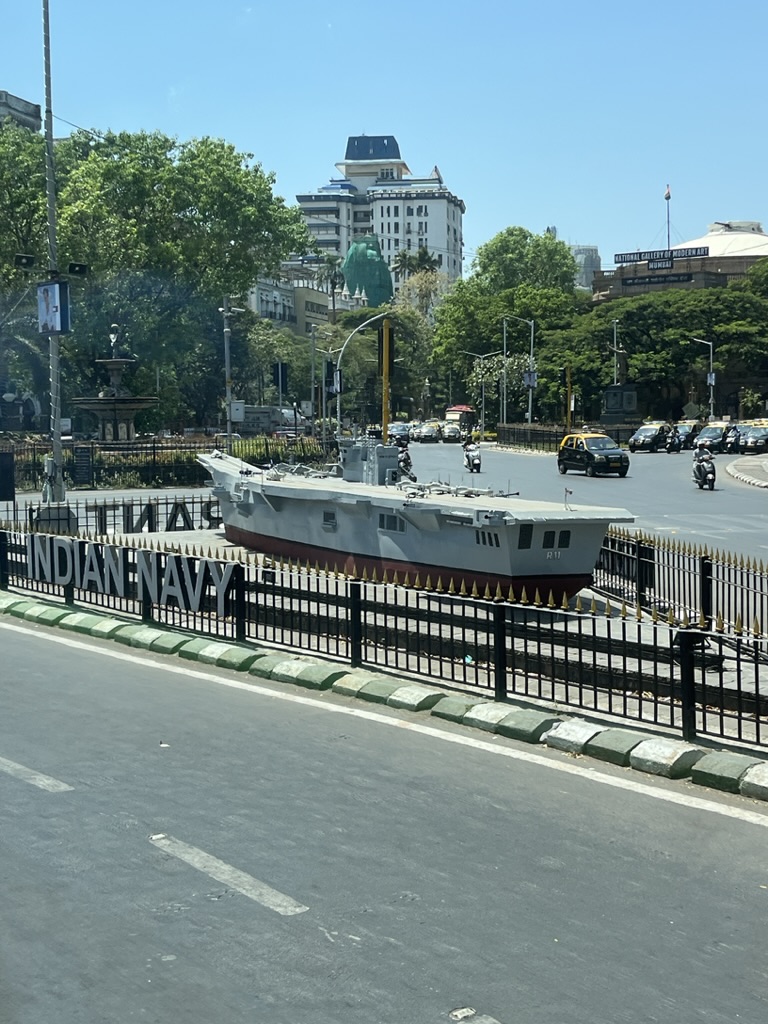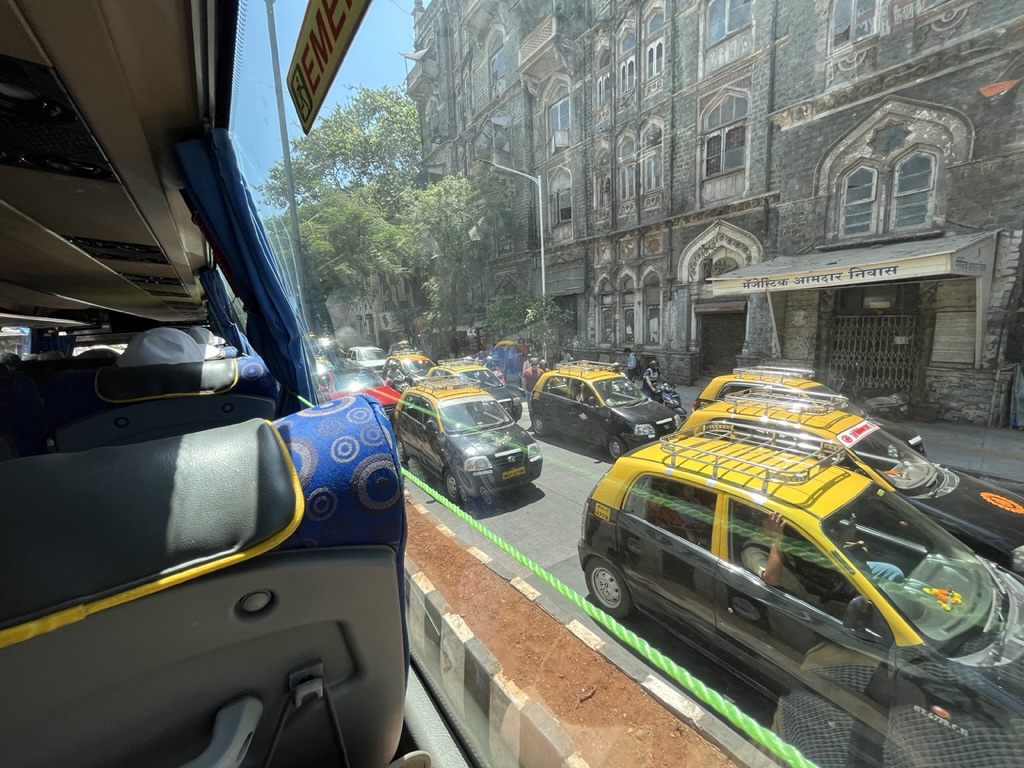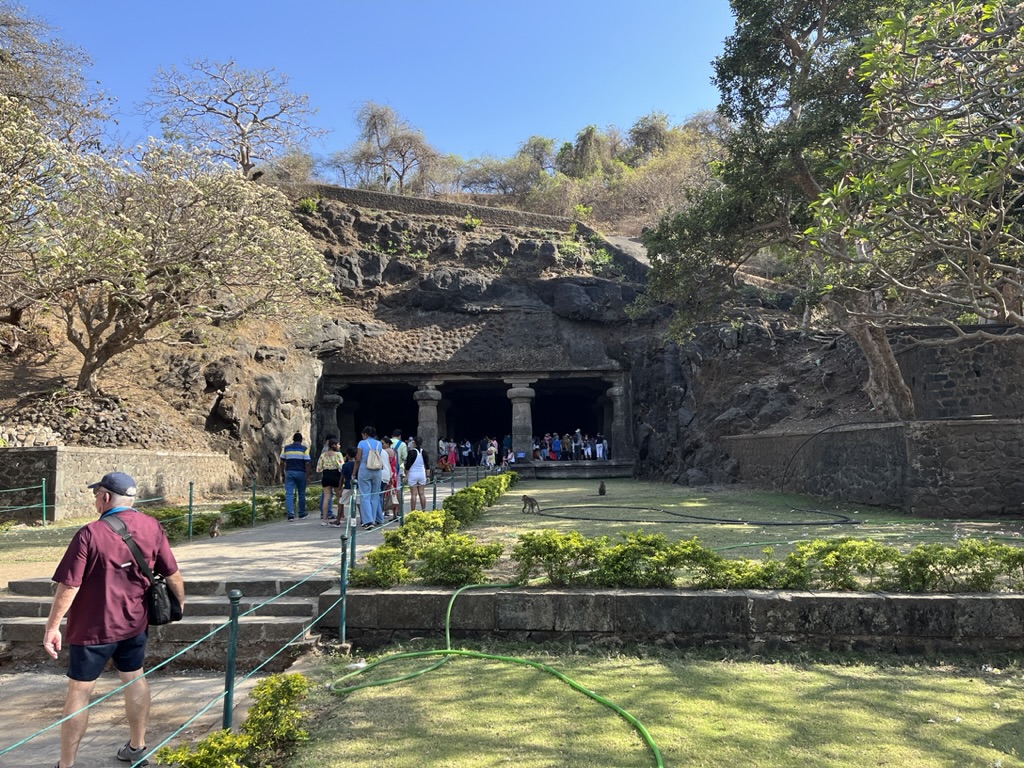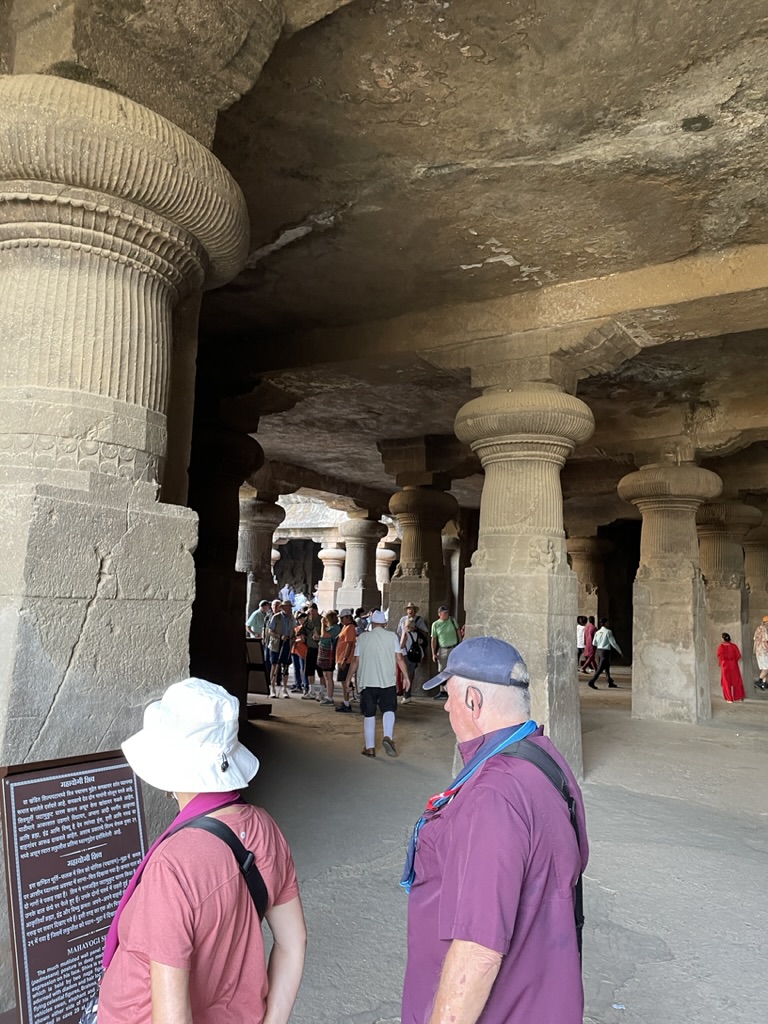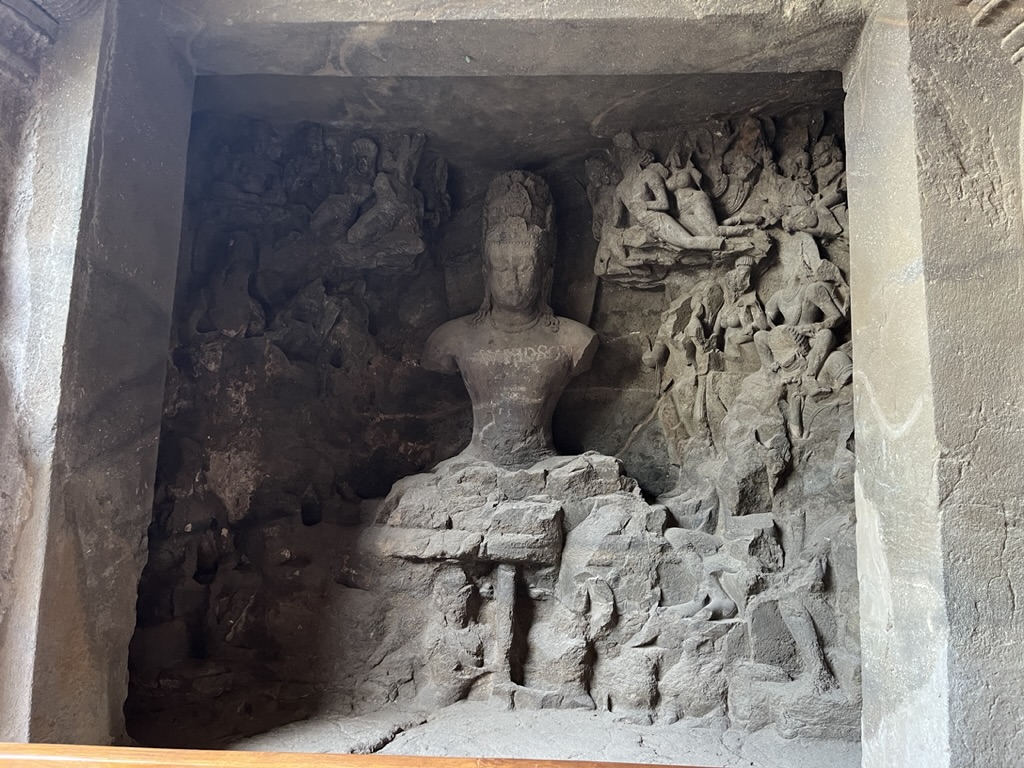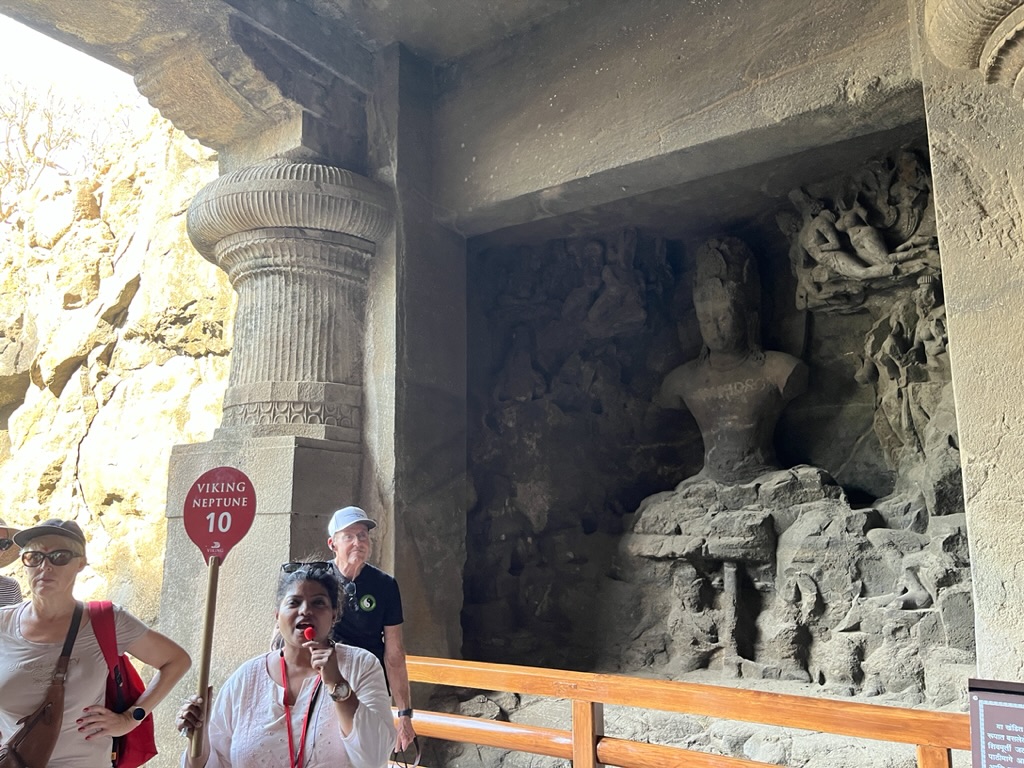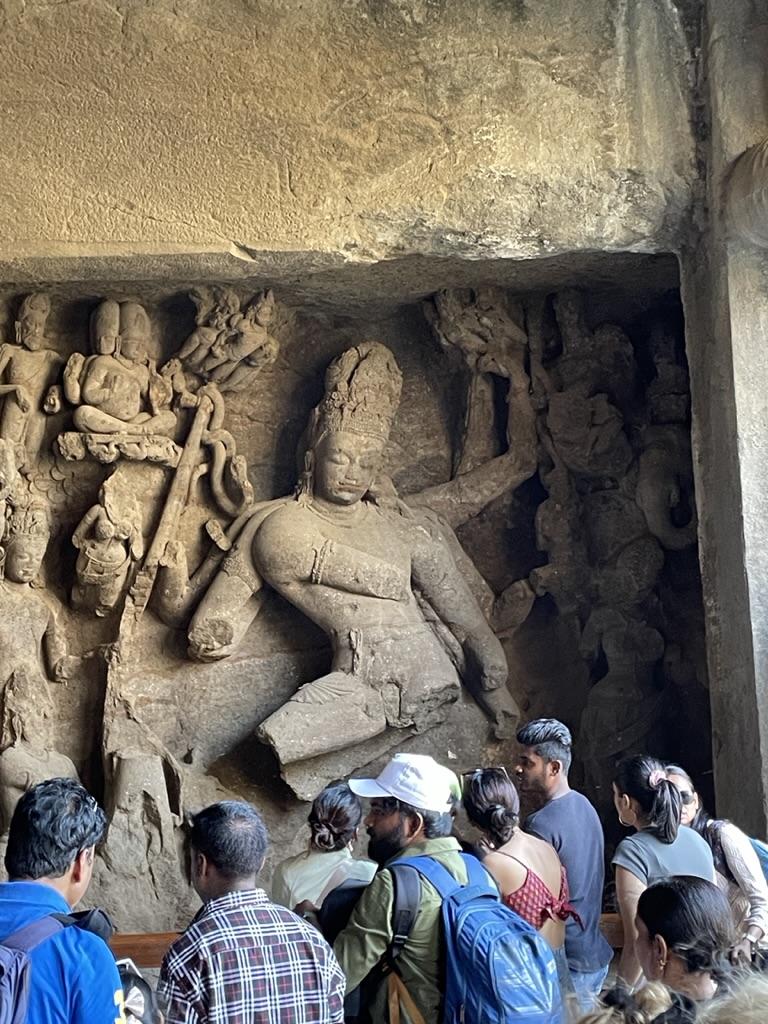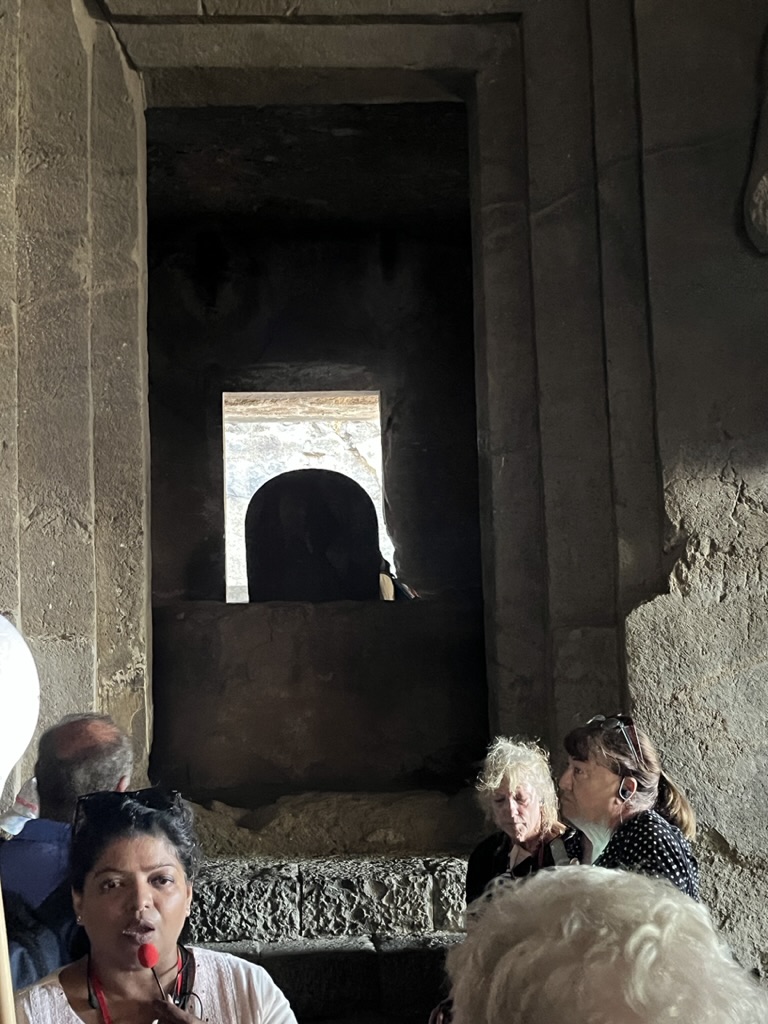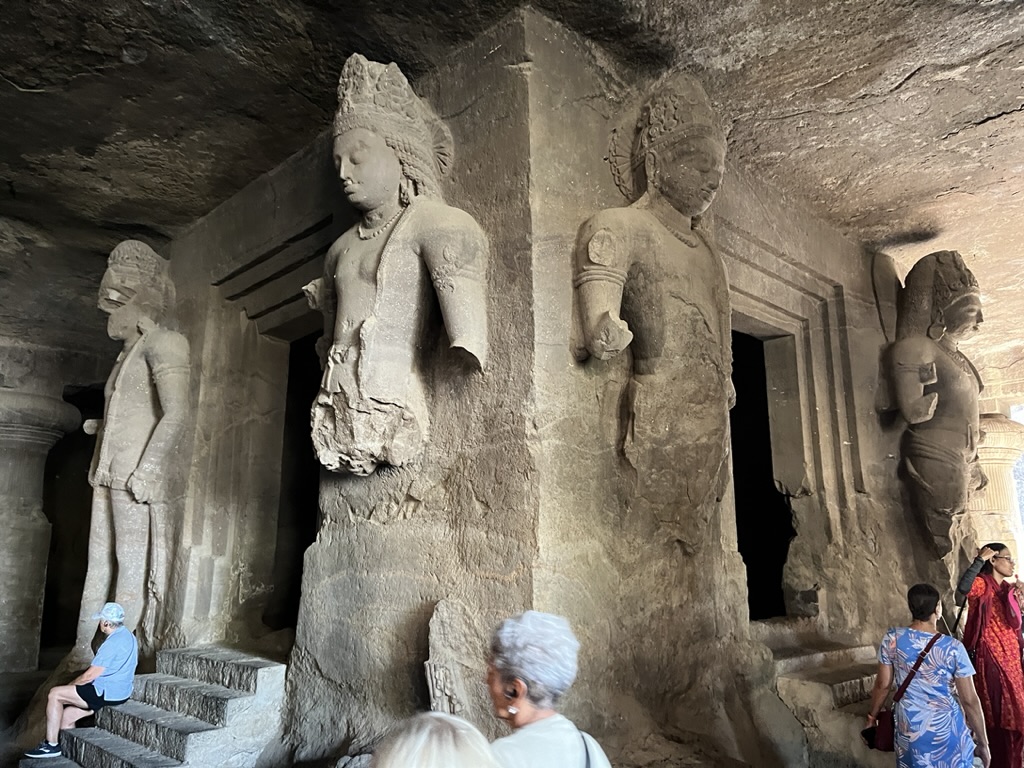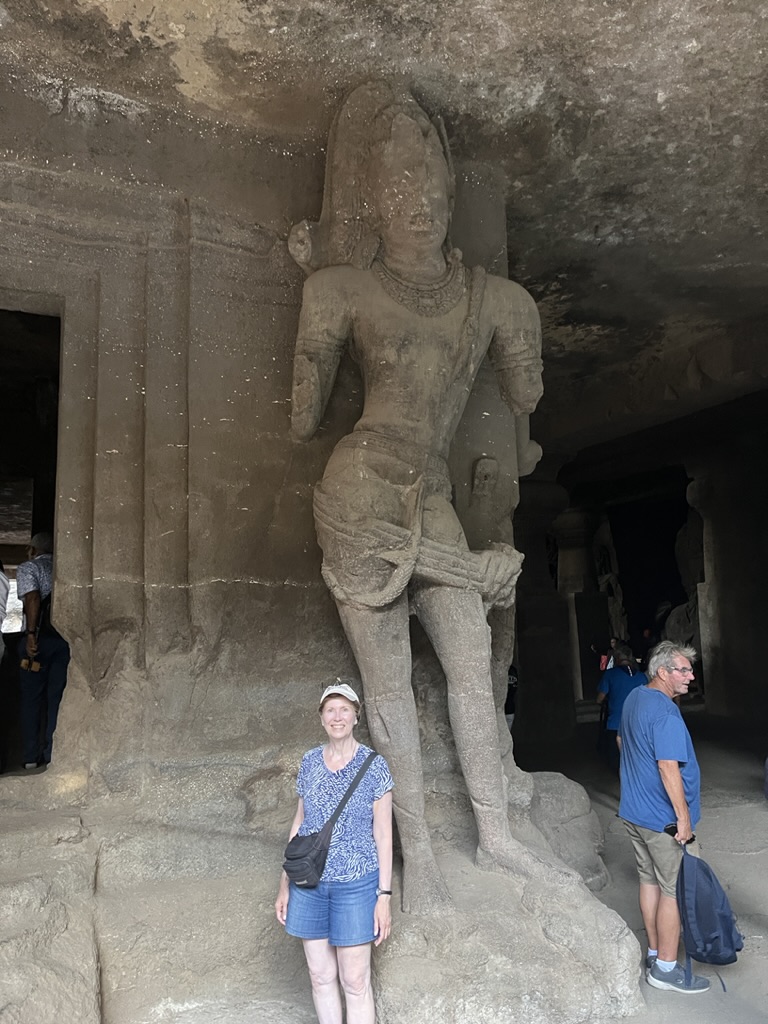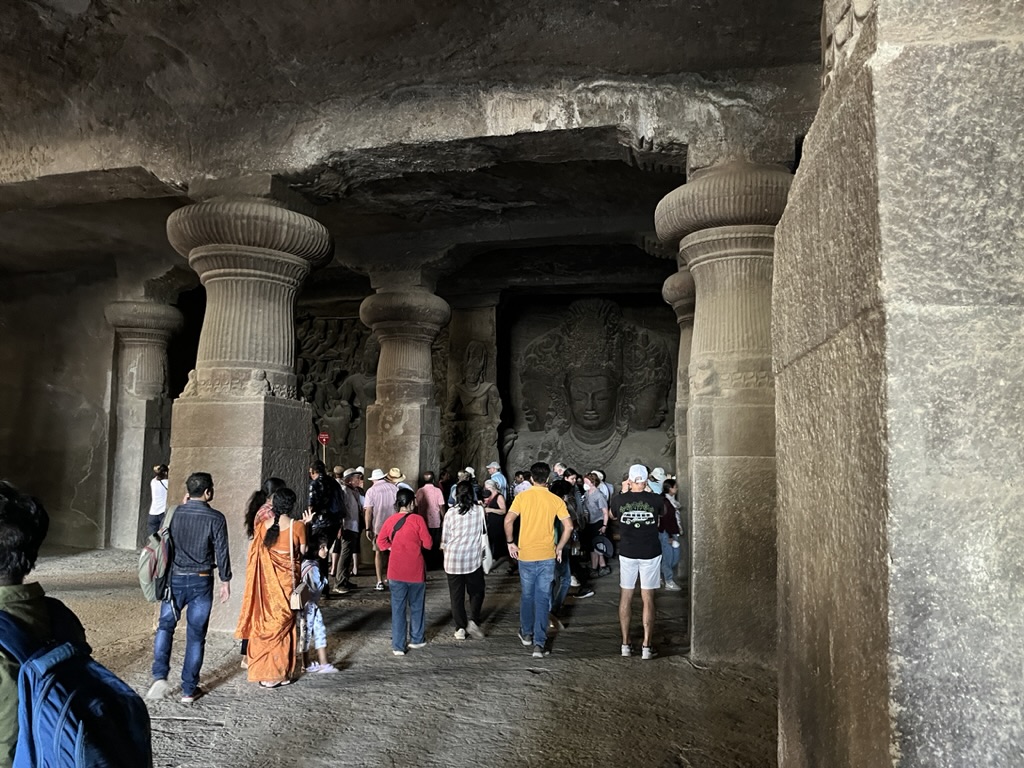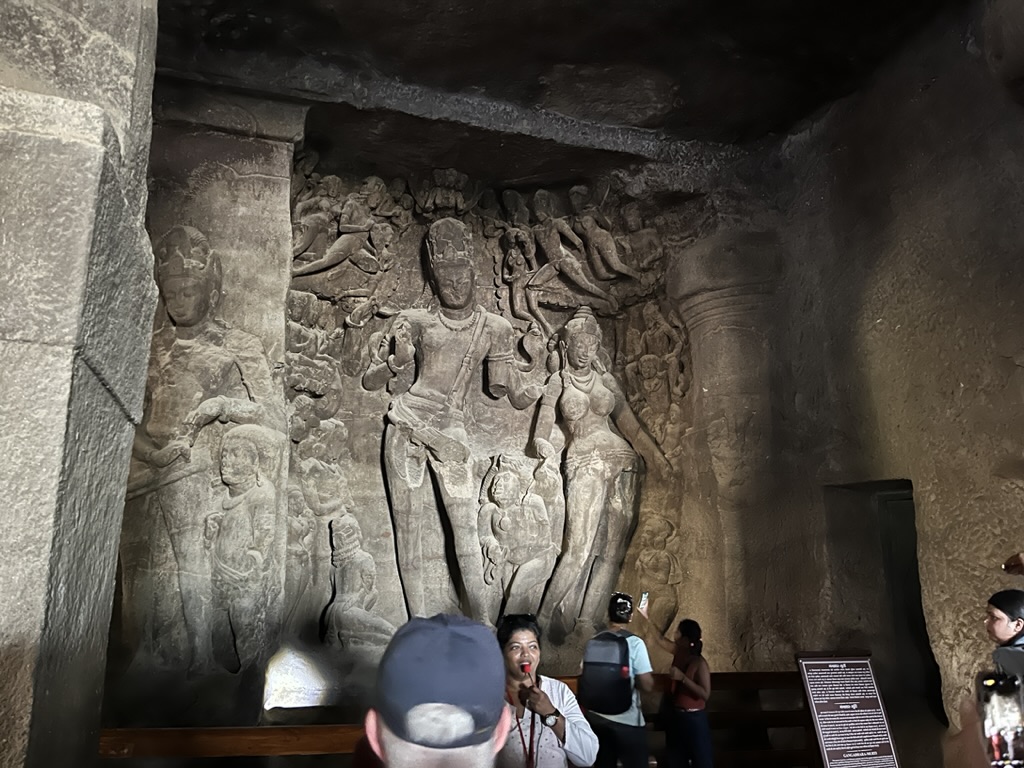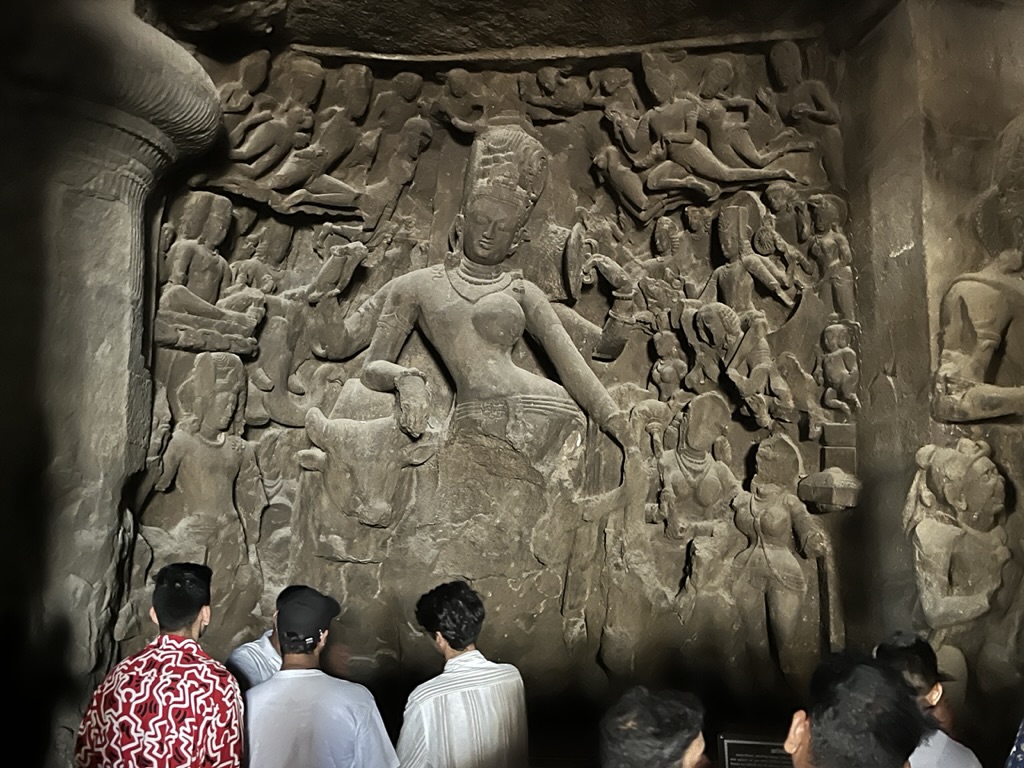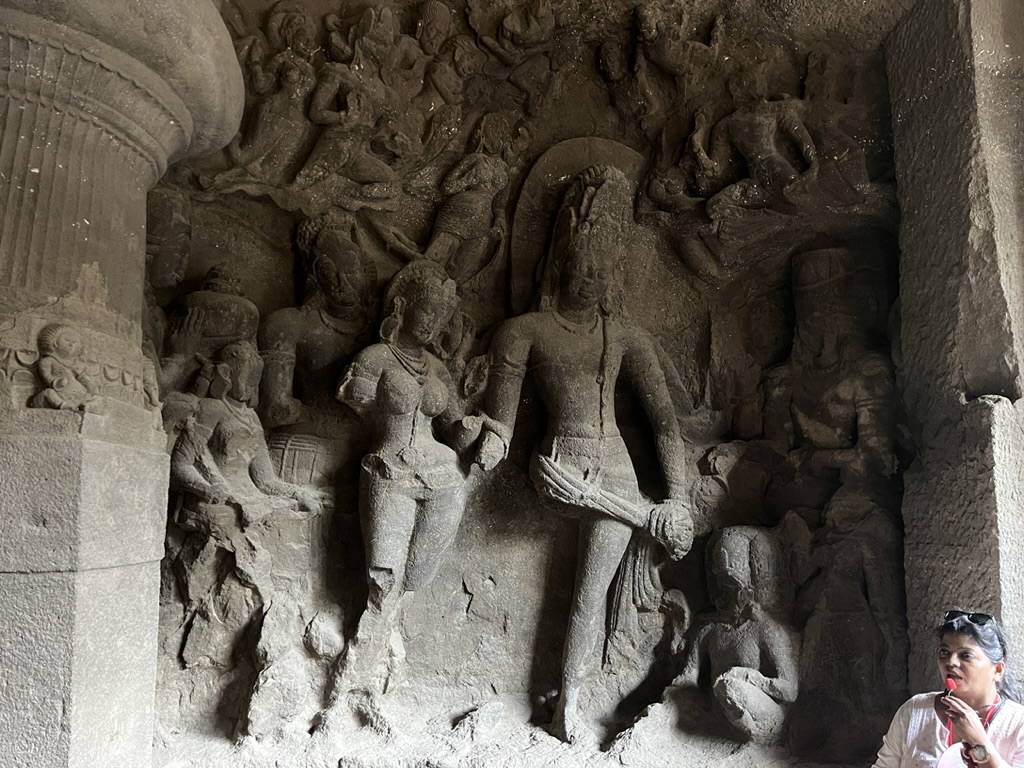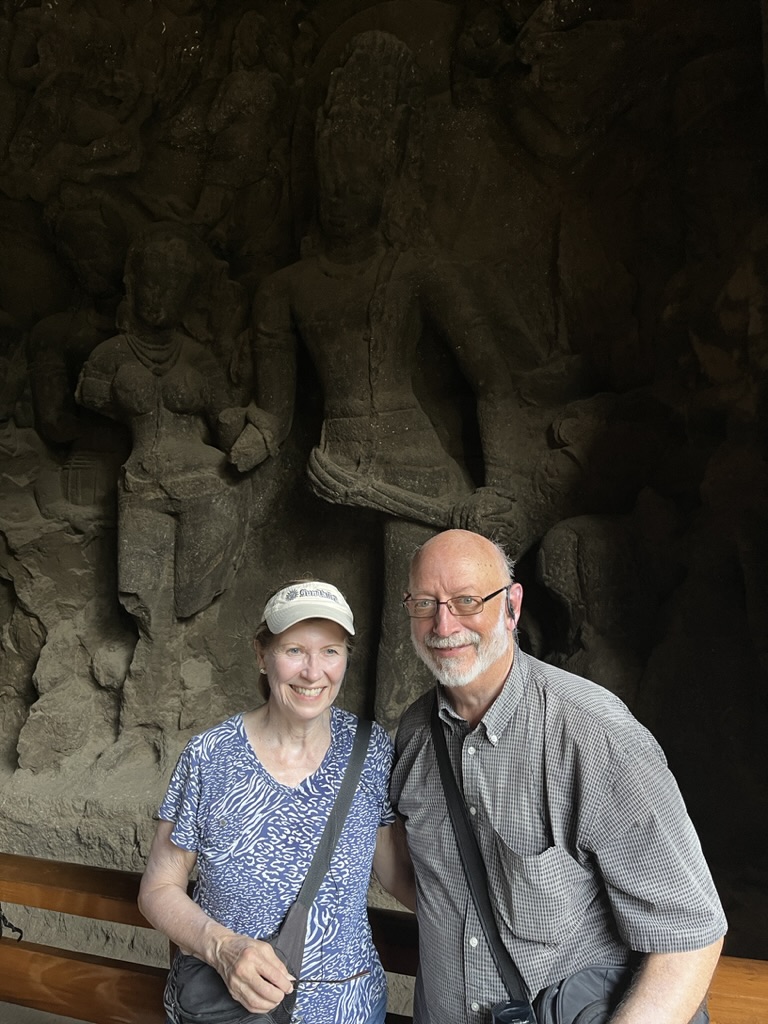We weren’t schedule to arrive in Mumbai until noon today, so the morning was very much like a typical sea day: Up, Exercise, Breakfast,
9:30 lecture “Mumbai: India in Microcosm.” (The third picture below is a service that came to be called tiffin, after the English slang tiffing “to take a little drink”. In Northern India, tiffin is basically lunch packed in a tiered metal lunchbox also called a tiffin. A dabbawala picks up the packed tiffin box from the home by mid morning and delivers each person’s “tiffin” to their place of work – and after about an hour he comes back to the work place to pick up the dirty tiffin cans to return them to their homes.)
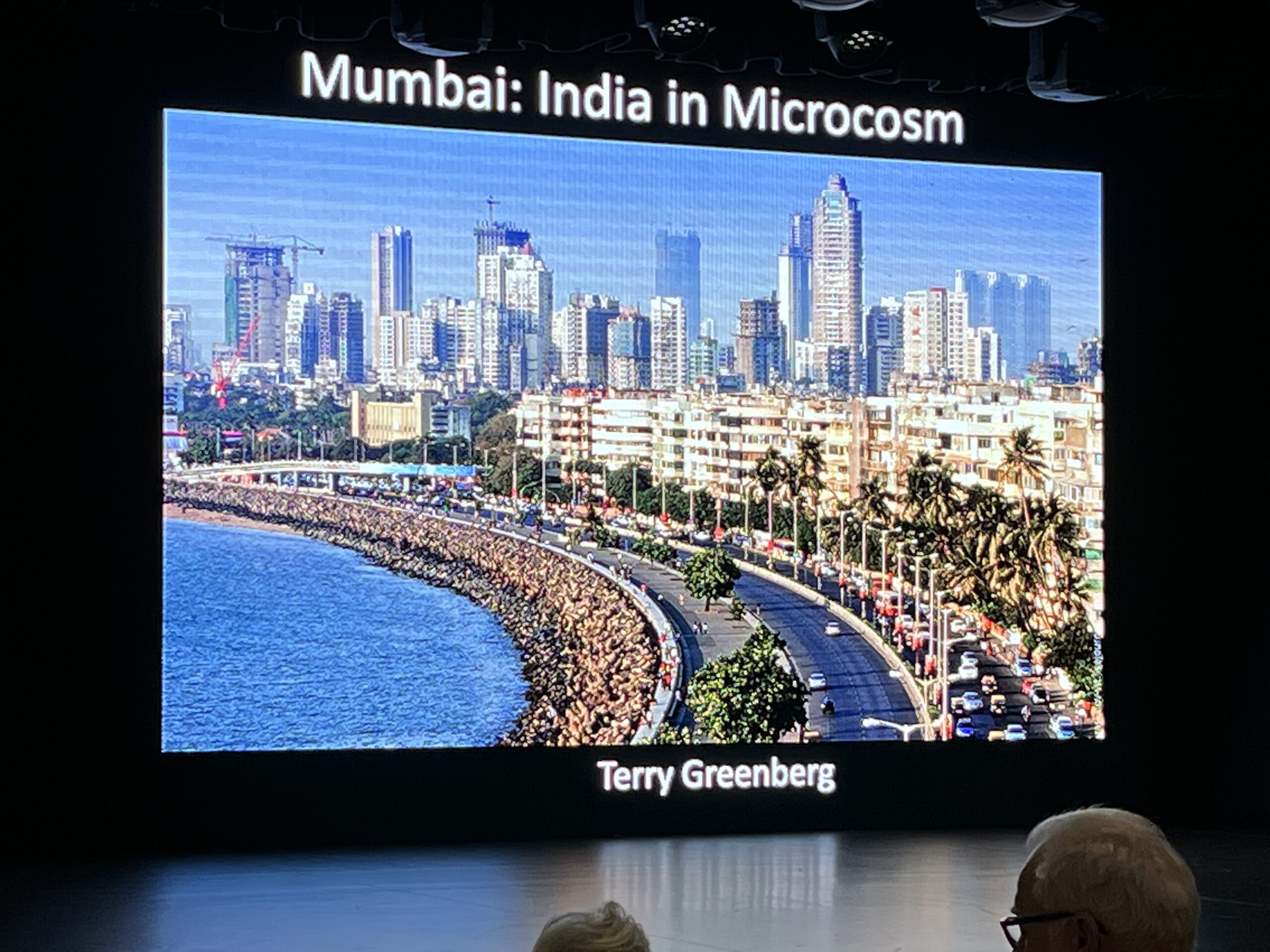
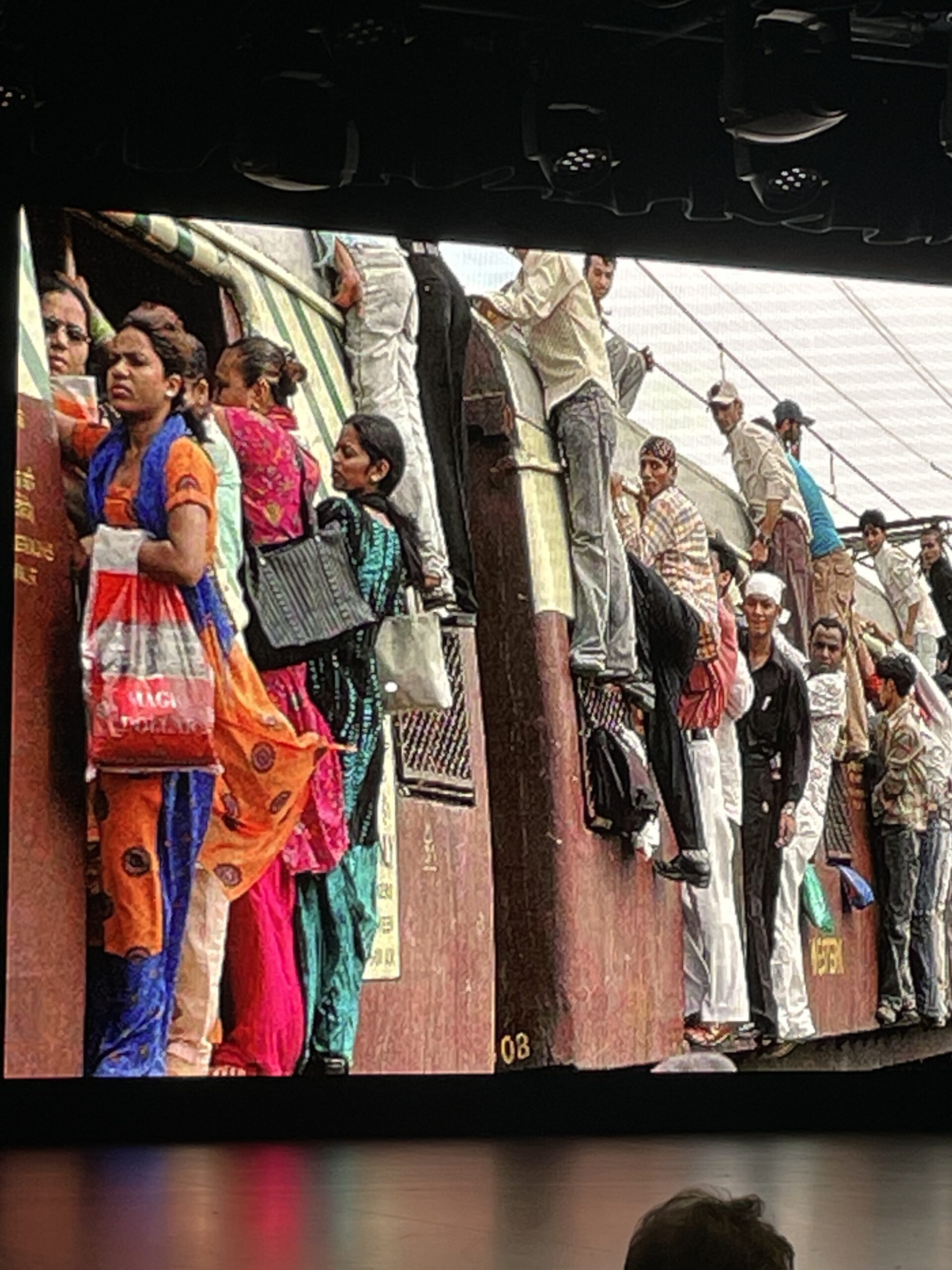
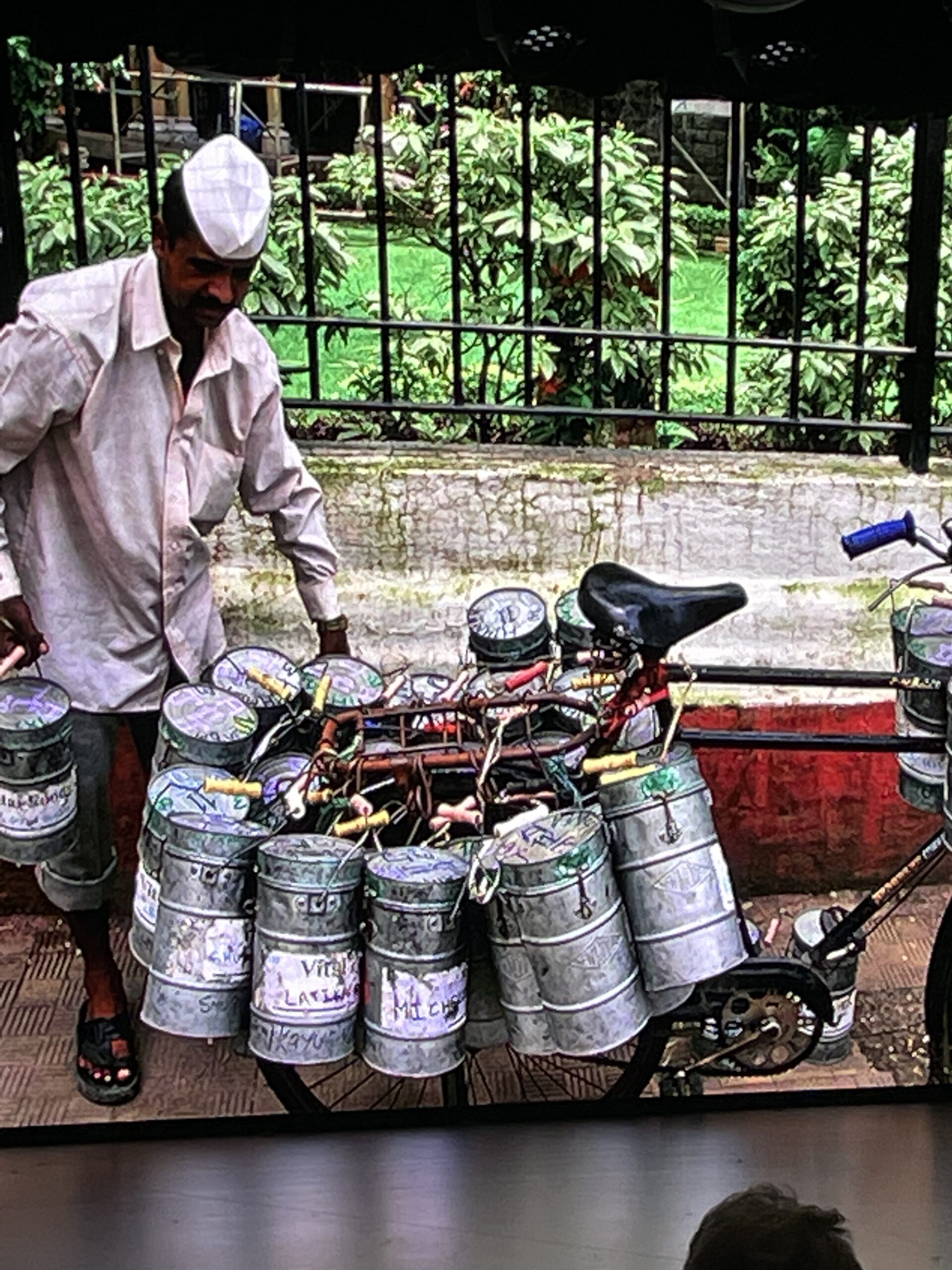
The big surprise of the day was when we docked and our internet immediately shut down.
I visited Guest Services and was told that “They are aware of the problem and are working on it.”
The next day the ship’s rumor mill suggested that our internet signal was being blocked by the Indian Navy – we were anchored right next to their Eastern Fleet Command Center. Sounded plausible. We’ll have to see how quickly it comes back after we leave on Wednesday.
So we docked shortly before noon and the ship was cleared about 1:00.
We were in the Theatre waiting for our excursion to be called (it was – in the fullness of time).
Then we proceeded to Passport control where we presented our passports (they kept them) and our “landing card” which they stamped and gave back to us. The Landing Card was a key document (actually a letter sized sheet of paper) that we presented three times every time we left the port and twice every time we returned.
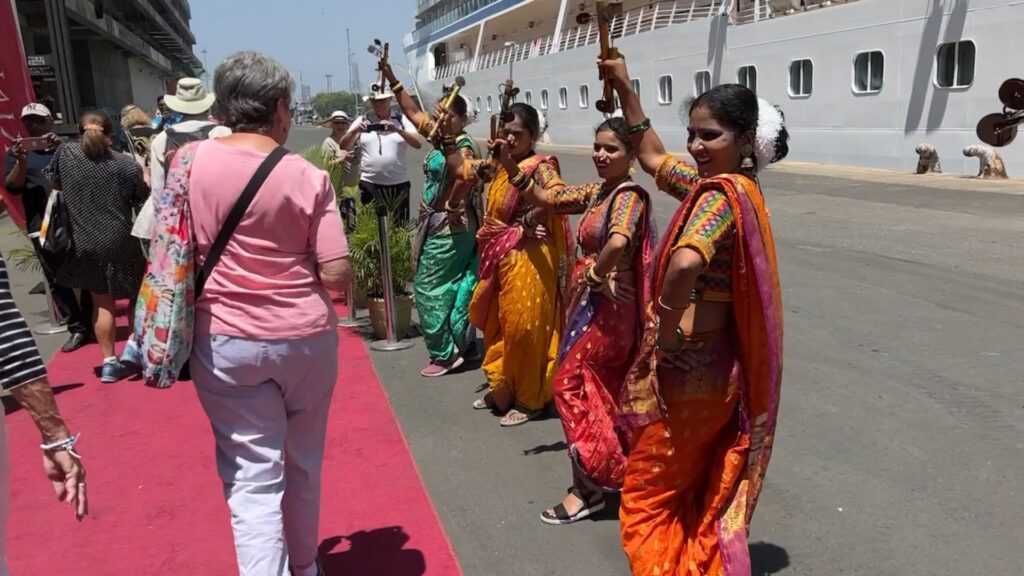
[Video “Immigration Line”]
Eventually we found ourselves on our tour bus heading for where we could pick up a small boat to sail over to Elephanta Island.
Along the way our guide pointed out some of the significant buildings, mostly from the British era. Here are a few, along with other interesting finds:
Eventually we arrived at the “Gateway of India” which was built to commemorate the visit of the first British king to visit India, King George V (and Queen Mary-the parents of Queen Elizabeth II). Compare the heavily photo-shopped image from our “Daily” with the actual reality:
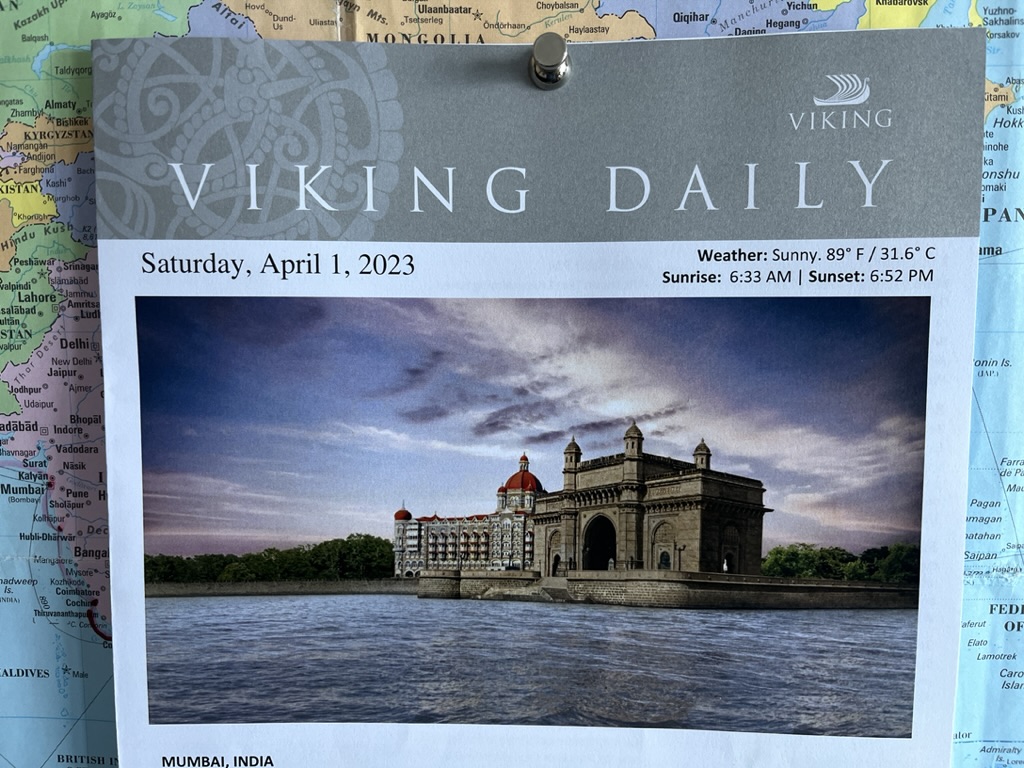
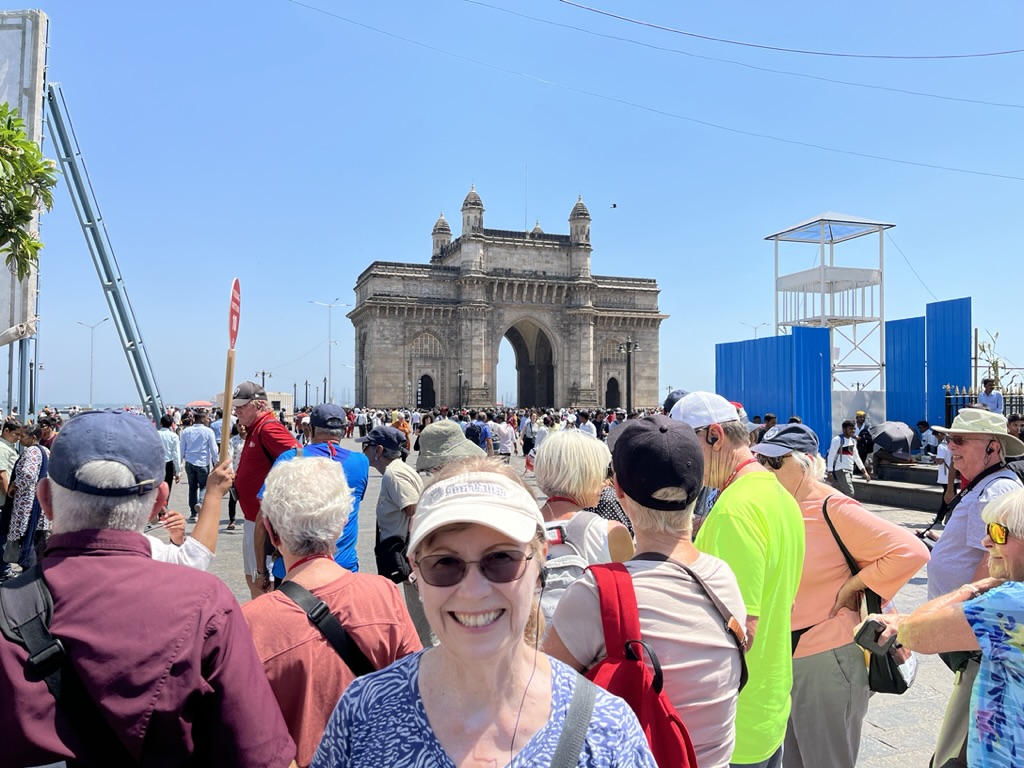
Working our way thru the crowd we boarded our boat to take us to Elephanta Island – one of the islands in Mumbai’s harbor, site of the “Elephanta Caves.” This is not actually a set of caves – rather they are Hindu temples carved into the side of a basalt mountain in the 5th to 6th Century AD.
The carvings primarily portray various aspects of the Hindu god Shiva. Originally a temple, the Portuguese used the carvings for target practice, significantly damaging many of the images. So it now is not a place of worship but is a UNESCO Heritage site.
The complex consists of 5 Hindu caves, a few Buddhist Stupa mounds (that date to the 2nd Century BC), and 2 Buddhist caves.
There also used to be a statue of an elephant on the dockside to welcome you (which is how the Portuguese named this island). After the British took over Mumbai, they tried to take the elephant back with them to England – but the lifting crane snapped, the elephant dropped and was shattered. The broken fragments were collected and brought to Sir George Birdwood, the curator of the Victoria & Albert Museum of Bombay. Under his supervision, the pieces were joined back and it remains outside this museum in Mumbai.
We docked and walked the pier to the island. There is a small train that will carry passengers the 300 yard distance – but it was crowded so we joined most of our group in walking the distance. Along the way we did see a few cows.
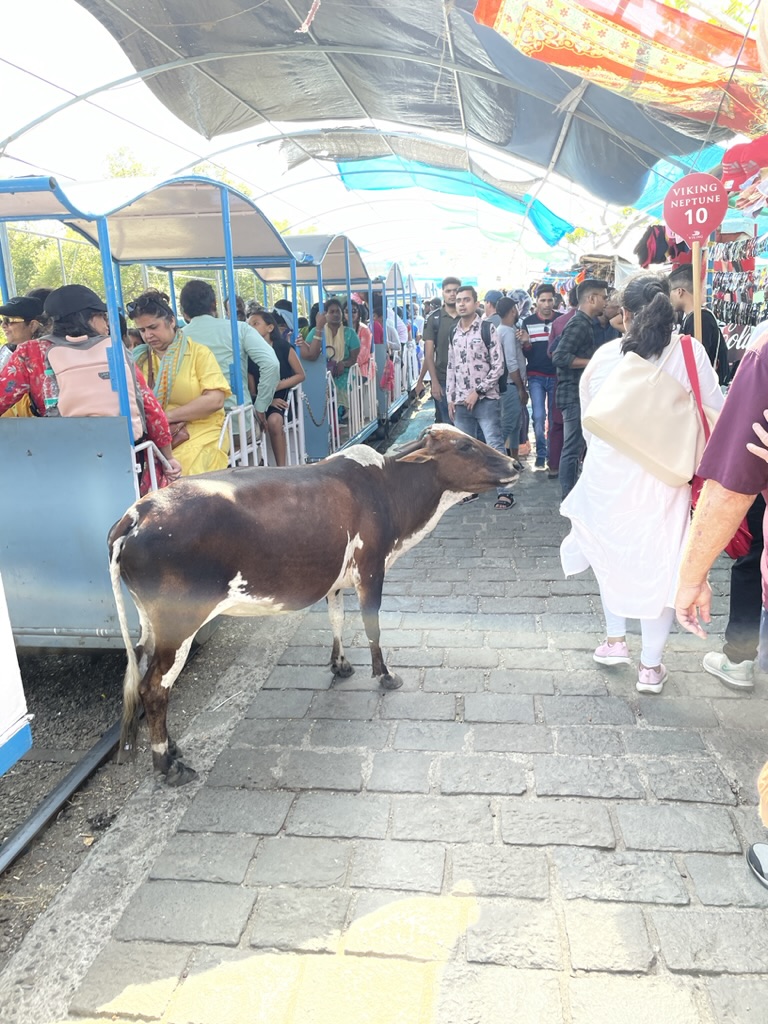
The cave complex is some 300 feet up the mountain so we negotiated a 120 step basalt staircase – lined on both sides by booths selling all manner of tourist schlock; from the standard magnets, scarves, Hindu statues, jewelry, and geodes to plastic toys and super hero action figures.
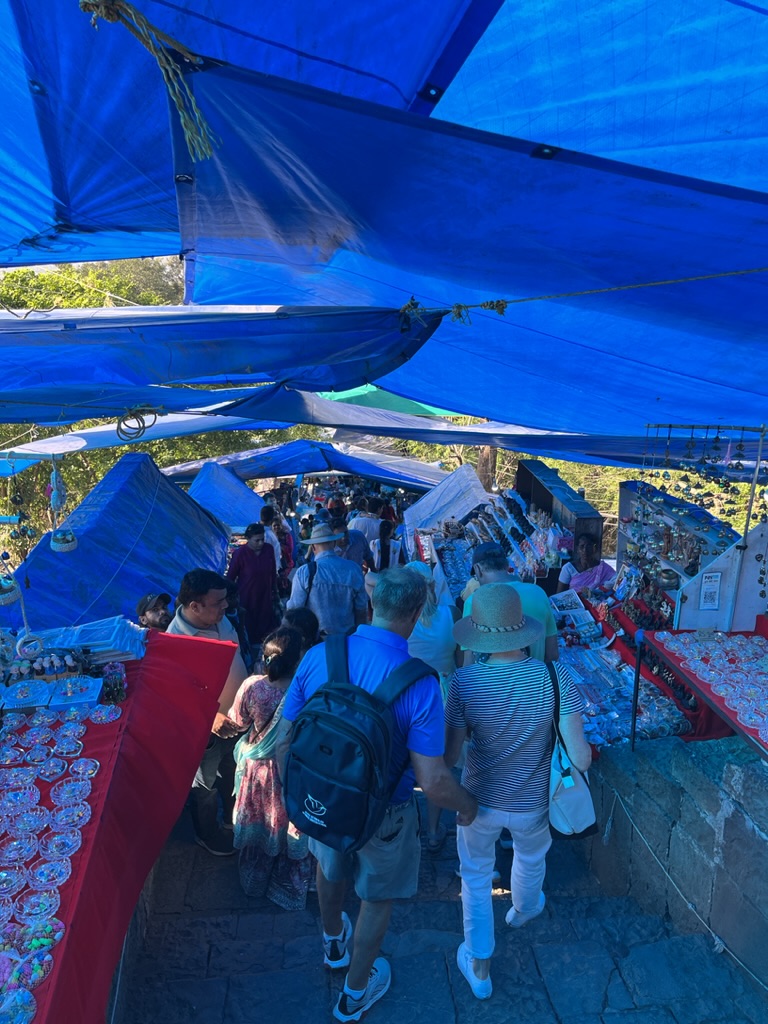
We chose to climb the stairs but there was an option – to be carried (for a fee).
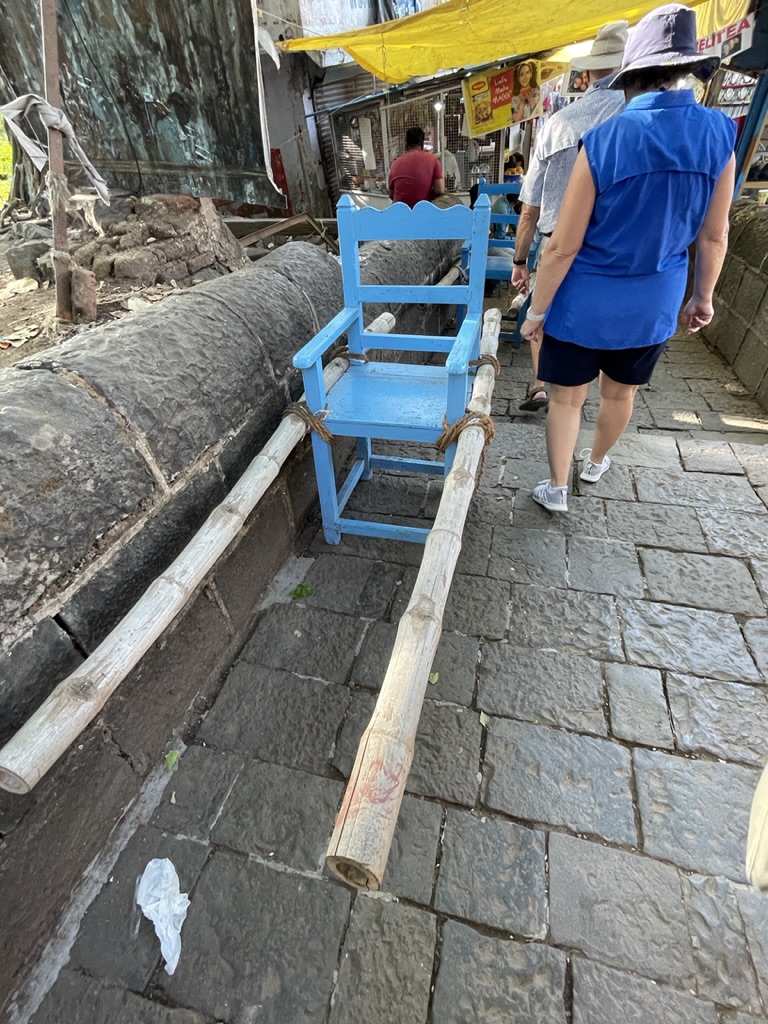
Eventually we arrived at the main temple.
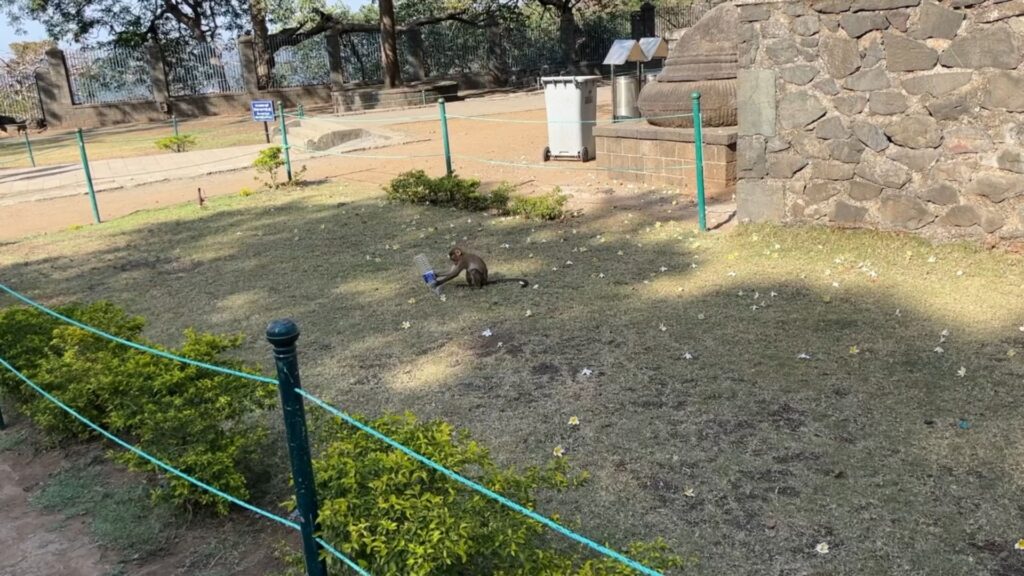
Once inside our guide took us around describing the main figures carved from the rock.
After taking us around the main temple, the tour guide turned us loose to brave the vendors on our way back down to the boat dock. We were mostly successful – but I did buy a small rechargeable fan for Cheryl.
Back on the ship we went straight to dinner after our 6 hour tour and treated ourselves to celebratory tipples.
Following dinner they had arranged a “Destination Performance” for us.
This was a dance group who brought several dances from various parts of India.
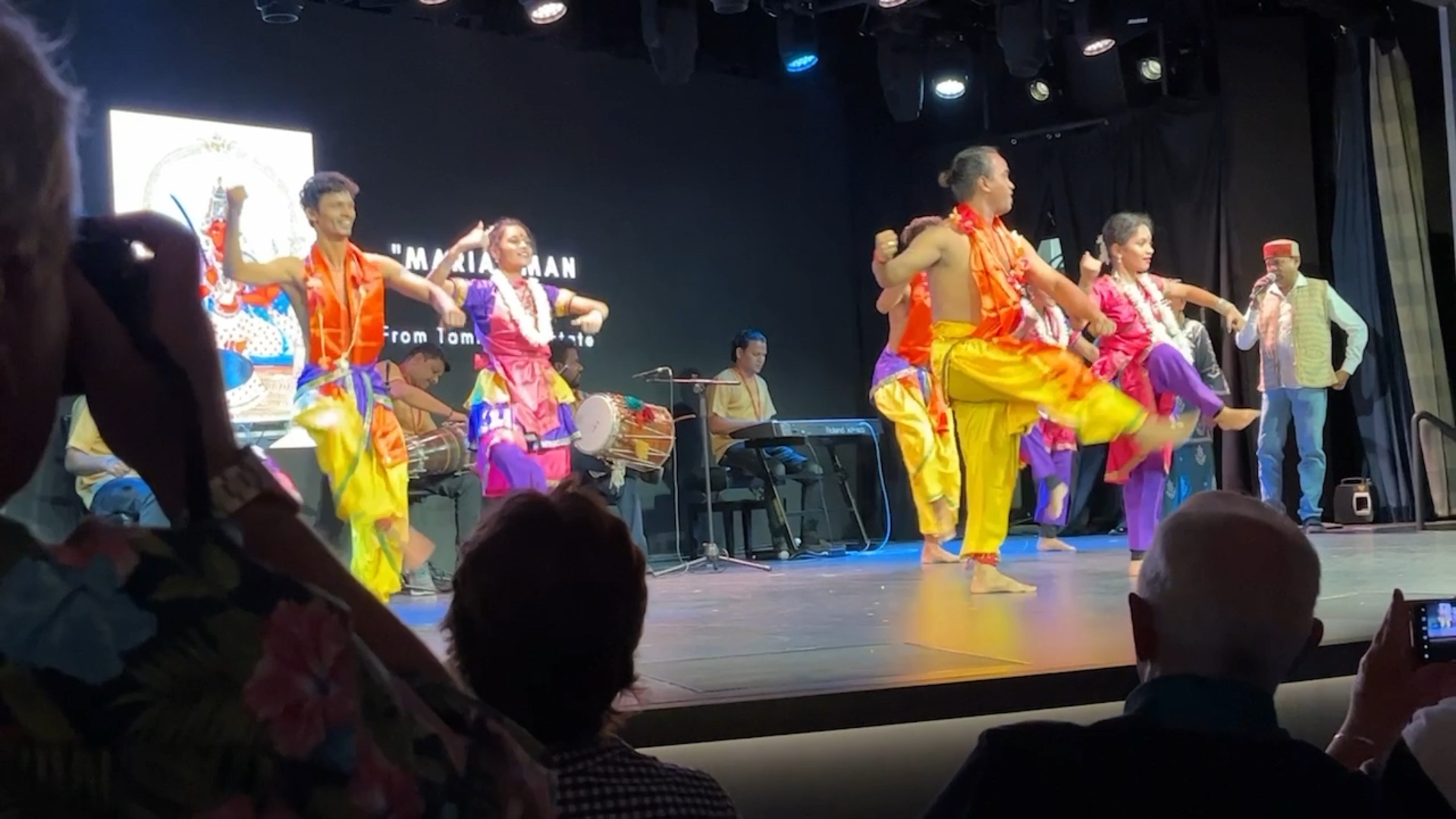
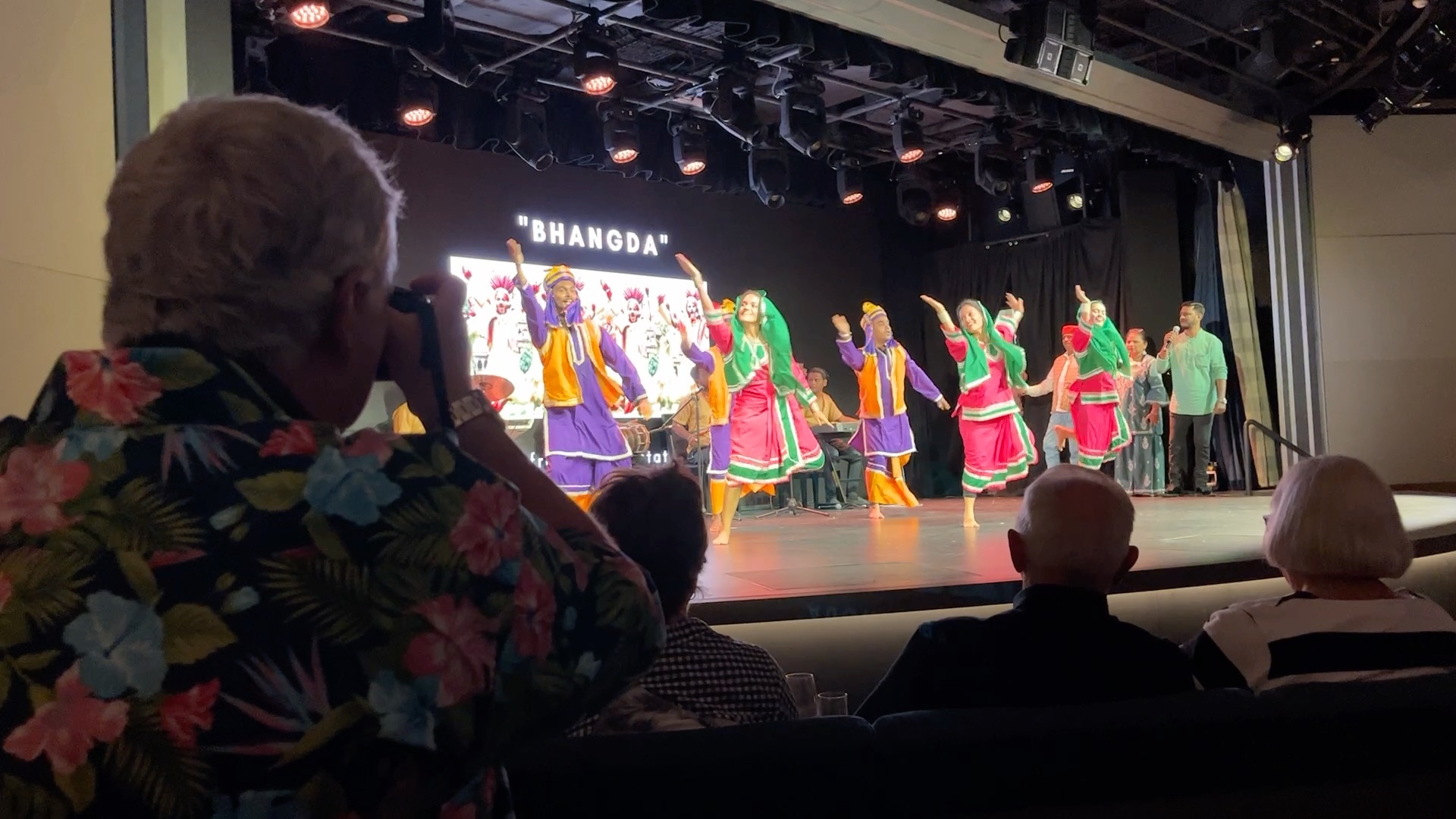
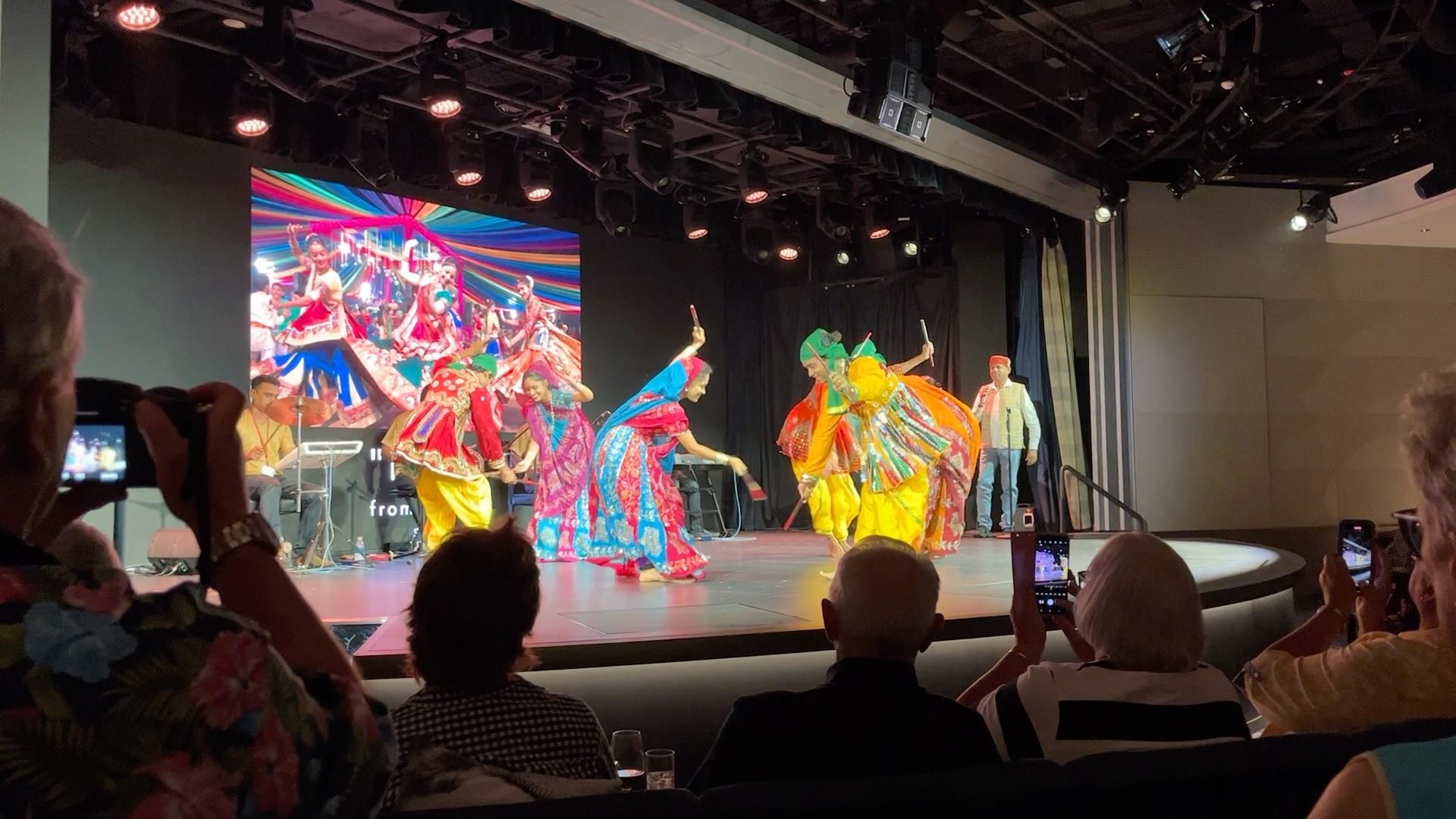
[Video “Stick Dance”]
[Video “Solo Dance”]
[Video “Guests Up”]
Cheryl’s Factoids:
- India population of 1.4 billion has almost surpassed that of China.
- The film industry of “Bollywood” attracts people to Mumbai looking to star in the movies.
- Mumbai is the world’s 3rd largest financial center and India has the most call centers in the world.
- When the Portuguese arrived they called this area “Bonn Bay” from which we got the city name of Bombay – however in 1995 they elected to go back to its original name of Mumbai.
- Since most of the people commute into the city to work, the 3 railways of Mumbai carry 7 MILLION passengers PER DAY, crowding on however they can (Mumbai is currently working on their first underground subway and a very long bridge directly across the arc of the bay to connect one end of the city to the other which will help). Since bodies are pressed so closely together, the women have their own coach.
- One convenience is that they can visit then shop for supper during the commute home (women food sellers come on during the stops.
- India has 26 billionaires and also the most slum dwellers – often overlooking each other. One billionaire has built a 40 story building for just his 5 person family (the first 6 floors hold just his automobiles).
- Mr. Tata, millionaire owner of Tata Steel and Tata Motors, wasn’t allowed into the British hotel (no Indians or dogs) – he was so incensed that he built his own hotel – the Taj Mahal Hotel, India’s first 5 star hotel, which is open to anyone.
